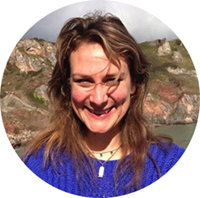I was born in Park Royal, west London, with an innate interest in natural history, especially birds. My earliest birding memory is watching house sparrows in my back garden aged five and thinking that they were baby birds.
As a child I had no mentor, so I taught myself about natural history. I have had an ongoing insatiable desire to learn everything about birds ever since.
I had no guidebook so I made up names for the birds that I saw. When I was 11, I moved further afield to my local park, where the birding bug truly bit me.
My friends could not understand my obsession and most made fun of me. My family was also baffled, but they didn’t discourage me. My mum bought me a bird book and a pair of binoculars, unaware that birds would be a major part in my life.
I was fairly focused and obsessive about nature as a child. Nothing else mattered to me until I was 15 and discovered beer, music and girls.
If I had never taken up birding, I probably would have worked in the music industry either as a musician or as a producer/DJ.

My favourite bird by far and away is the ring ouzel. Hardly an urban bird, but as a kid poring through my first guidebook, I fell in love with the idea of this wild, rare and mysterious thrush. I thought that it was gorgeous and I needed to see one.
I don’t think it is for me to declare myself a role model. However, my ambition is to inspire urban kids to look up and be aware of nature. If just one of those kids develops an interest, then I will have done my job.
There is no single best urban site for wildlife, because nature is all around us. For a kid growing up in an inner-city housing estate, finding a painted lady butterfly on a patch of rough ground could be a far more inspiring experience than a visit to a bona fide nature reserve.
The most fascinating wildlife encounters I’ve ever had in Britain were witnessing a ring ouzel at Wormwood Scrubs – my local park; watching pilot whales off Dungeness in Kent and finding a poplar hawk moth while playing football. You don’t have to be anywhere special to see great things.
The countryside is not quite the antithesis of the city that people might think, as I often find the same birds there that I see in town. But I love its sounds and smells. Being in the countryside comforts me and I miss it when I’m away.
I particularly love islands. My favourite UK islands include Mull, Shetland and Alderney. I love their remoteness and the potential for watching migration.

The landscape that induces the most awe has to be the Highlands and islands of Scotland. Ever since I first visited there as a teenager, I fell in love with the mountains and rugged coastlines. It was as far away from an urban streetlight as I could get.
I consider myself lucky enough to be able to find peace in the most unlikely of places; high in Tower 42 in central London or at Wormwood Scrubs at 5am on a summer’s morning.
During my time as a presenter on Countryfile, I nearly converted Julia Bradbury into a birder when I contributed on a piece about the black-tailed godwits on the Exe Estuary. I saw her twitching with excitement when she clapped eyes on them.

If I could change one thing about the countryside overnight, I would make the creation and maintenance of hedgerows and set-aside areas compulsory.
My countryside hero is the late Sir Peter Scott for turning from poacher to gamekeeper, for setting up the Wildfowl and Wetlands Trust, and for bringing a slice of rural idyll to my doorstep in the shape of the London Wetland Centre.
Main image ©Talent 4 Media

